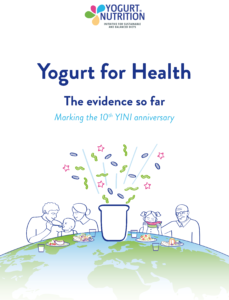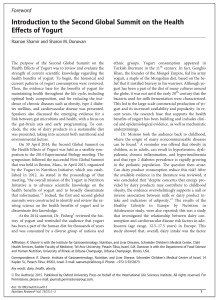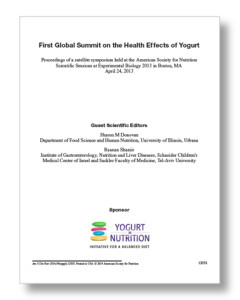Publications on food, nutrition & health
Publications about food, nutrition & health
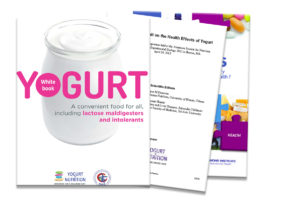
In order to make new scientific knowledge available for practitioners, the Danone Institute international publishes symposia proceedings, monographs, books or guides about food, nutrition & health.
Written by world-renowned experts, these publications cover a wide variety of topics, present overviews of recent development, promote consensus and/or explore controversy surrounding relevant issues.
Discover and download the last scientific publications coordinated by the Danone Institute International experts and working groups:
NEW – Yogurt for Health: the evidence so far marking the 10th anniversary
As we celebrate the 10th anniversary of the Yogurt in Nutrition initiative, we look back at the achievements so far and embrace the new challenges that lie ahead. And for this anniversary, we propose to share an analysis of 12 evidence-based conclusions about yogurt and health.
The Yogurt In Nutrition Initiative (YINI) was established in 2013 to summarise our scientific knowledge on the health effects of yogurt. The activities of the YINI are guided by a Scientific Advisory Board of experts with a passion for advancing understanding of the links between diet and health.
Over the past decade, the YINI has organized 10 Global Summits on the health effects of yogurt as well as other major events at international conferences.
Since 2019, the YINI has taken on an additional role to address some of the most pressing concerns of our modern world: hunger, food sustainability, and planetary health. It became the Yogurt in Nutrition Initiative for Sustainable and Balanced Diets, with a new mission: “to promote and advance knowledge and practice on healthy sustainable diets and the importance of all food groups to meet nutritional needs across the lifespan, while respecting local food cultures, affordability, and accessibility”.
We celebrate the 10th anniversary of the YINI at a time of rapid scientific advancements that are highlighting exciting potential developments for managing health through yogurt as part of a sustainable and balanced diet. Meanwhile, we are pleased to share our latest evidence-based conclusions so far in this Yogurt for Health publication, updated from the first edition that was published on the YINI 5th anniversary.
Learn more and download the publication
Microbiota – the invisible friend of good health at all ages (2022)
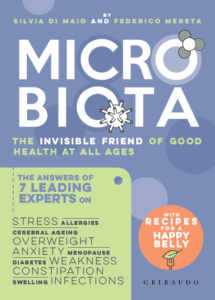
The Danone Institute International presents the official translation into English of the DI Italy “ Microbiota Book “, coordinated by Silvia Di Maio and Federico Mereta, and translated by Simon Tanner.
This scientific publication is an holistic perception of the microbiota world: psychiatry, microbiology, gastroenterology, … presenting a journey inside the microbiota through a simplified language and ad hoc illustrations.
This mix of historical, anthropological and scientific concepts explains why research on gut bacteria, from ancient texts to the most recent scientific evidence, is a sector of great interest for science. Thanks to a Q&A structure, 7 recognized experts explain several topics considering the different ages and conditions in life. The final part is dedicated to a weekly menu for a “healthy belly”.
More information and free download on the associated webpage
“Yogurt, more than the sum of its parts”: Proceedings in Advances in Nutrition (2019)
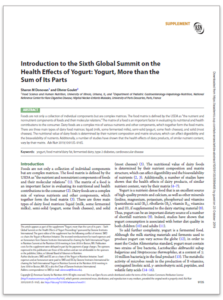 The 6th Global Summit on the Health Effects of Yogurt took place in June 2018 during the ASN annual meeting, in Boston (USA). This YINI summit was on “Yogurt, more than the sum of its parts”. Leading experts gathered to review the major recent data about yogurt, dairy matrix, fermentation and nutrient-density. Indeed, yogurt is a nutrient dense food and offers live bacteria. But studies shows also that people who eat yogurt tend to have healthier lifestyles… heard it all before?
The 6th Global Summit on the Health Effects of Yogurt took place in June 2018 during the ASN annual meeting, in Boston (USA). This YINI summit was on “Yogurt, more than the sum of its parts”. Leading experts gathered to review the major recent data about yogurt, dairy matrix, fermentation and nutrient-density. Indeed, yogurt is a nutrient dense food and offers live bacteria. But studies shows also that people who eat yogurt tend to have healthier lifestyles… heard it all before?
The proceedings of the conferences are published in Advances in Nutrition (Sept 2019).
Yogurt for Health: 10 evidence-based conclusions (2018)
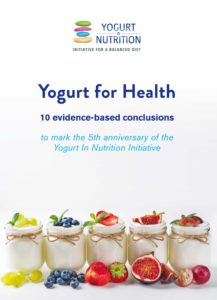 The YINI’s 5th anniversary was celebrated in June 2018. For this occasion, YINI has published this document “Yogurt for Health – 10 evidence-based conclusions to mark the 5th anniversary of the Yogurt In Nutrition Initiative”
The YINI’s 5th anniversary was celebrated in June 2018. For this occasion, YINI has published this document “Yogurt for Health – 10 evidence-based conclusions to mark the 5th anniversary of the Yogurt In Nutrition Initiative”
In this document, the YINI board reviews the recent advances in scientific understanding about the health effects of yogurt and draws several evidence-based conclusions like nutrient-density, reduced risk of type 2 diabetes, healthier diet and lifestyle, reduced risk of cardiovascular diseases…
Yogurt in Nutrition – White book on Lactose digestion (2017)
 Lactose intolerance has become an obsessive preoccupation of a growing population worldwide, along with exclusion diet new trends. These new trends could be seen as a better overall consideration of the role of food in human health or as misinformation related to some type of foods.
Lactose intolerance has become an obsessive preoccupation of a growing population worldwide, along with exclusion diet new trends. These new trends could be seen as a better overall consideration of the role of food in human health or as misinformation related to some type of foods.
For instance, lactose intolerance is often confused with cow’s milk allergy and avoidance of dairy is often considered the only alternative for the lactose intolerant.
This white book, developped in collaboration with the WGO, is a review of scientific publications that brings a better understanding of lactose intolerance and the risks of a restrictive diet.
> Discover and download the Yogurt White book
“Yogurt and Health: what happens in the pot and in the gut?” – Proceedings in Nutrition Review (2018)
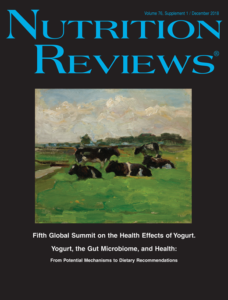 During 5th Global Summit on the Health Effects of Yogurt, (Oct 2017, IUNS, Buenos Aires, Argentina) experts were gathered to review the major discoveries from the last ten years around gut microbiota. Recent research has shown it could act as a biomarker for disease and a fundamental target for specific interventions, including dietary ones, like yogurt consumption.
During 5th Global Summit on the Health Effects of Yogurt, (Oct 2017, IUNS, Buenos Aires, Argentina) experts were gathered to review the major discoveries from the last ten years around gut microbiota. Recent research has shown it could act as a biomarker for disease and a fundamental target for specific interventions, including dietary ones, like yogurt consumption.
The proceedings are published in The Nutrition Review (Supp. Edition, Dec 2018) and available online.
Synthesis posts are also available on yogurtinnutrition.com
“Health Effets of yogurt” – Proceedings in Nutrition Reviews (2015)
In 2014, the Danone Institute International in partnership the American Society for Nutrition organized the 2nd Global Summit of the Health Effects of Yogurt, during the Nutrition Sessions organized by the American Society for Nutrition during Experimental Biology 2014, in San Diego USA.
The proceedings of the Summit has been published in 2015 in a Supplement of the Nutrition Reviews.
Discover and download the publication
“Health Effects of Yogurt” – Proceedings in American Journal of Clinical Nutrition (2014)
In 2013, the Danone Institute International created the Yogurt in Nutrition: Initiative for a Balanced Diet in partnership the American Society for Nutrition and together, they organized the 1st Global Summit of the Health Effects of Yogurt, during the Nutrition Sessions organized by the American Society for Nutrition during Experimental Biology 2013, in Boston USA.
The proceedings of the Summit have been published in 2014 in a Supplement of the American Journal of Clinical Nutrition.
Discover and download the publication
Health economic modeling to assess short-term costs of maternal overweight, gestional diabetes, and related macrosomia – a pilot evaluation (2015)
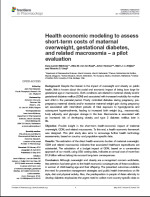 This article, published on May 20th, 2015 in Frontiers in Pharmacology presents a pilot evaluation supported by an unrestricted grant from the Danone Institute International.
This article, published on May 20th, 2015 in Frontiers in Pharmacology presents a pilot evaluation supported by an unrestricted grant from the Danone Institute International.
In order to provide insights in the short-term health economic impact of maternal overweight, gestional diabetes and related macrosomia, a health economic framework was designed. The pilot study also aims to encourage further health technology assessments, based on country – and population – specific data.
Download the publication available in open access
Food & Drugs: are there complementary beneficial effects for health?
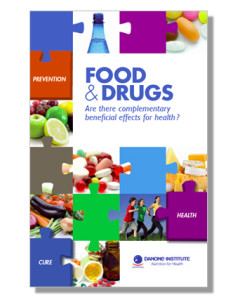 Food and drugs overlap considerably in definition and application, yet also possess several fundamental differences. Pharmacologically, drugs are defined as substances used to diagnose, mitigate, prevent, treat, or cure diseases. Foods are substances that provide taste, aroma, or nutritive value. Since drugs first originated from foods it is not surprising that the lines between the two are often thin. What distinguishes a food from a drug may not be as relevant as when it becomes a drug and what to do about the functional foods and food bioactives in between. Food & Drugs provide a reflexion and analysis of the differences, links and interest between drugs and functional foods.
Food and drugs overlap considerably in definition and application, yet also possess several fundamental differences. Pharmacologically, drugs are defined as substances used to diagnose, mitigate, prevent, treat, or cure diseases. Foods are substances that provide taste, aroma, or nutritive value. Since drugs first originated from foods it is not surprising that the lines between the two are often thin. What distinguishes a food from a drug may not be as relevant as when it becomes a drug and what to do about the functional foods and food bioactives in between. Food & Drugs provide a reflexion and analysis of the differences, links and interest between drugs and functional foods.

